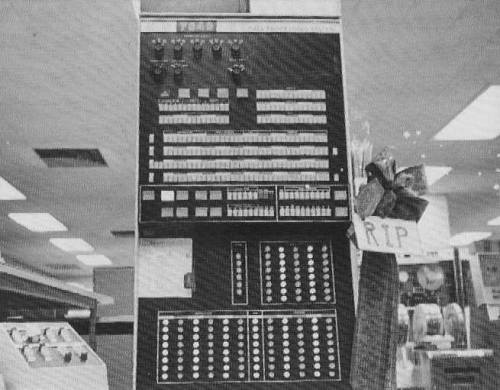What is a mainframe?
I was reading some old questions, and I ended up coming across a topic about COBOL where I was talking about mainframes. What is a mainframe, and what is the difference between a mainframe and a server as we know today ?
3 answers
In general it has always been known as a large computer, as opposed to smaller computers.
They used to (or are even in some rare cases) used for quite complex tasks (by the standards of the time) and run critical applications that need to be centralized. In many cases it was a central computer of an organization that had other computers for other activities.
Were made to hold the lock and be more reliable than the rest of the resources. They used to be quite modular (even processing could take place in modules, it was as if it had several processors that were different from what we use today). They were Server machines even, not as it is today that people use ordinary hardware to serve something because it is cheaper and create redundancy by distributing (which is often much harder to make it work right)
It was very common they were accessed by dumb terminals (only had screen and keyboard that it communicated only the characters that entered and left it to the computer without any processing (zero even, it had nothing or close to a processor, although then it began to have some little thing and even began to be done by software that emulated the terminal). The name may come from this too, because the terminals were connected to the Main Frame of computing, the name that in a certain way today many people mistakenly call CPU (when they talk about that Cabinet that the monitor, keyboard, mouse and other peripherals go on.
In fact today you have in your hand or pocket more computing power than a mainframe had:)
In general it runs jobs , which is similar to what many call microservices today :D Great News! That is, they were scripts .
It was common for them to be rented from so expensive that they were and required a lot of maintenance. In some cases you accessed it for a period remotely and paid for the use (do you know something like that today? :) the staff think they are using modernities).
Best photo I found to illustrate (there is a lot out there that show the terminal and magnetic tape drive that are peripheral and not the mainframe itself, there in the background has something, it seems until a paper tape punch):
I already used one from Unisys:) COBOL same.
In some respect it is a server, but it works in a way a little different. A little less if you've ever had contact with thin clients which are dumb terminals (although many work on top of a smart one). It also remembers a little how to access by SSH or RDP.
Server is a broader and even ambiguous term without a context, so it served something yes, but it was not common to be by network as it is today (there were even cases of some kind of network, but it was rarer).
The main feature of the mainframe is that it had no microprocessors, in the style of today's computers. The circuits that constituted the CPU (central processor unit) were large and modular, occupying entire cabinets. They had advantages, such as redundancy, the possibility of repair, etc.
The ALU (arithmetic and logical unit) was a separate circuit from the CPU itself, which only dispatched instructions.
Ancient texts still mention ALU as something separate from CPU, although every microprocessor (which we call CPU) has built-in ALU, even those of 8 or 4 bits.
Nowadays any centralized computing center with high processing capacity is nicknamed "mainframe", but current mainframes use microprocessors similar to PCs and Unix workstations.
Part of the answer above is correct,but they, the Mainframes (with M uppercase), are not passed. It imposes respect and can process millions of transactions in seconds and are so fast that a time-stamp can give as a duplicate if used as a key, it has already occurred to me. No more magnetic tape, I've seen use, and no more punched cards, let alone dumb terminals, and even use mouse. Their evolution are fantastic, they are very much used in banks or large companies to for example make a production planning of a particular product, imagine how you would organize the production of a car, stock, production line, factory floor stock, deliveries, orders to suppliers, etc etc....in banks it overcomes all the demand for incoming transactions that must be stored in temporary files (clouds) which undergo updates during the day andeffectivacoes in.heavy processing overnight. ... They still exist, and they are giants in.processing. This is why they are called high platform.
Att
